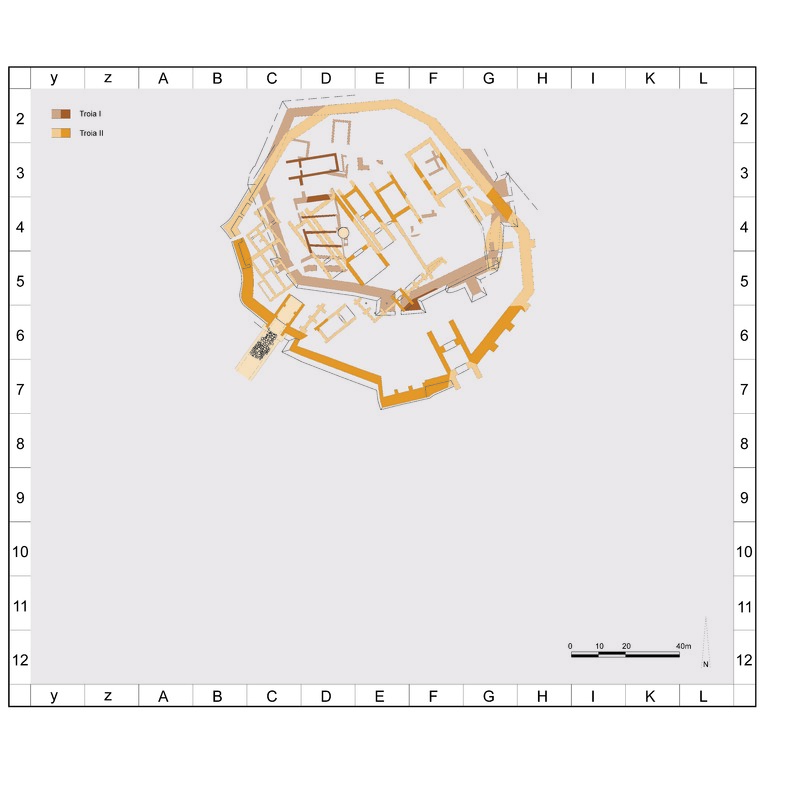Troy I-II (3000-2200 BCE)
While the origins of the inhabitants of Troy I are unknown, they thrived for half a millennium. The city may have prospered from its proximity to the Dardanelles as a trading center. A key feature of this earliest settlement of Troy is its battered (sloped) wall, defensive in design. Pottery of this period was molded by hand with little decoration. Houses came in different sizes and may have been freestanding.
Troy II was like the first city, especially in its architecture. However, it is significantly larger in size and there is evidence of increased wealth and technology. A new development was the introduction of the potter’s wheel. Pottery styles and shapes from Troy I remain too, and like Troy I, Troy II seems to have been destroyed by a fire that consumed the city.
